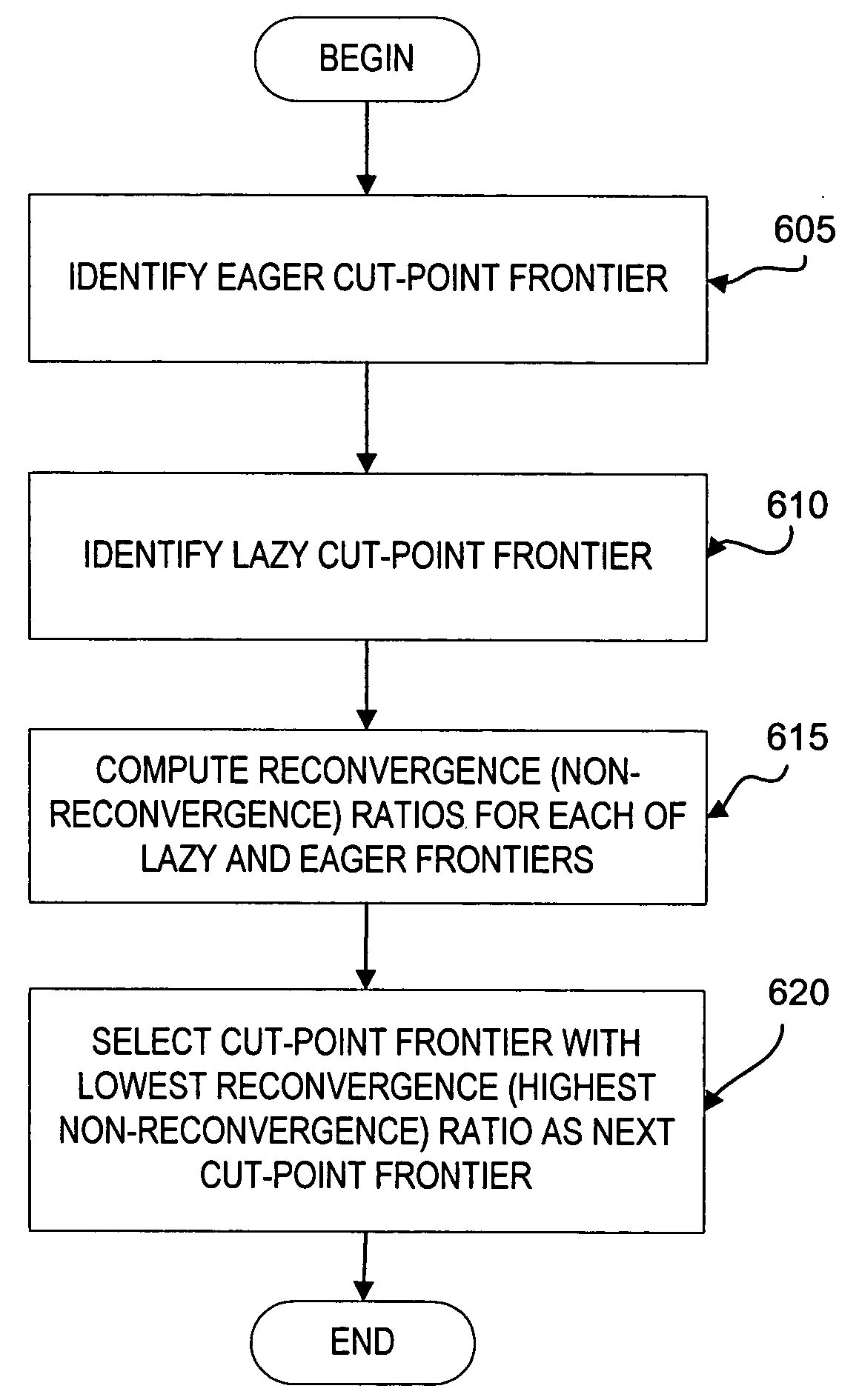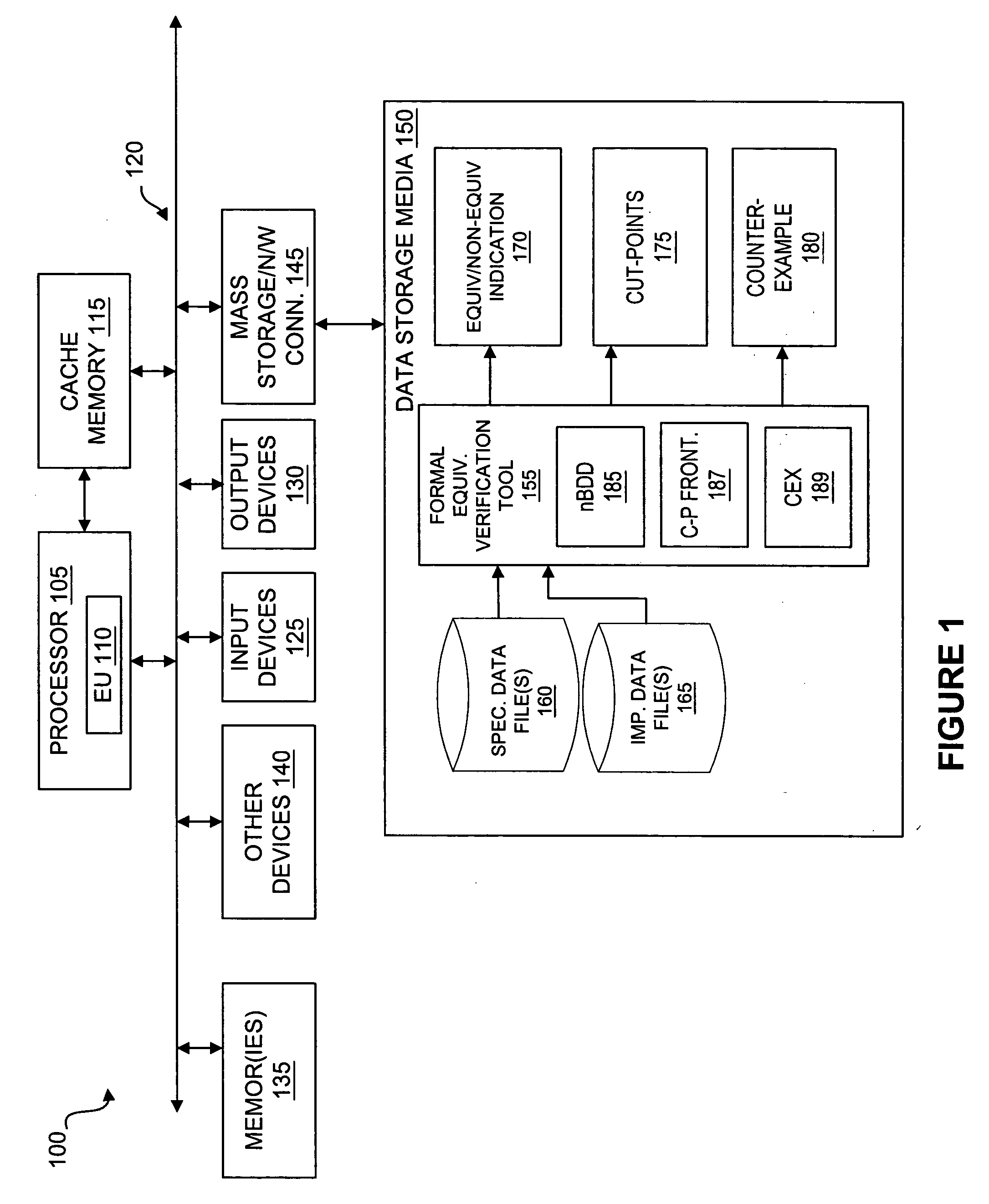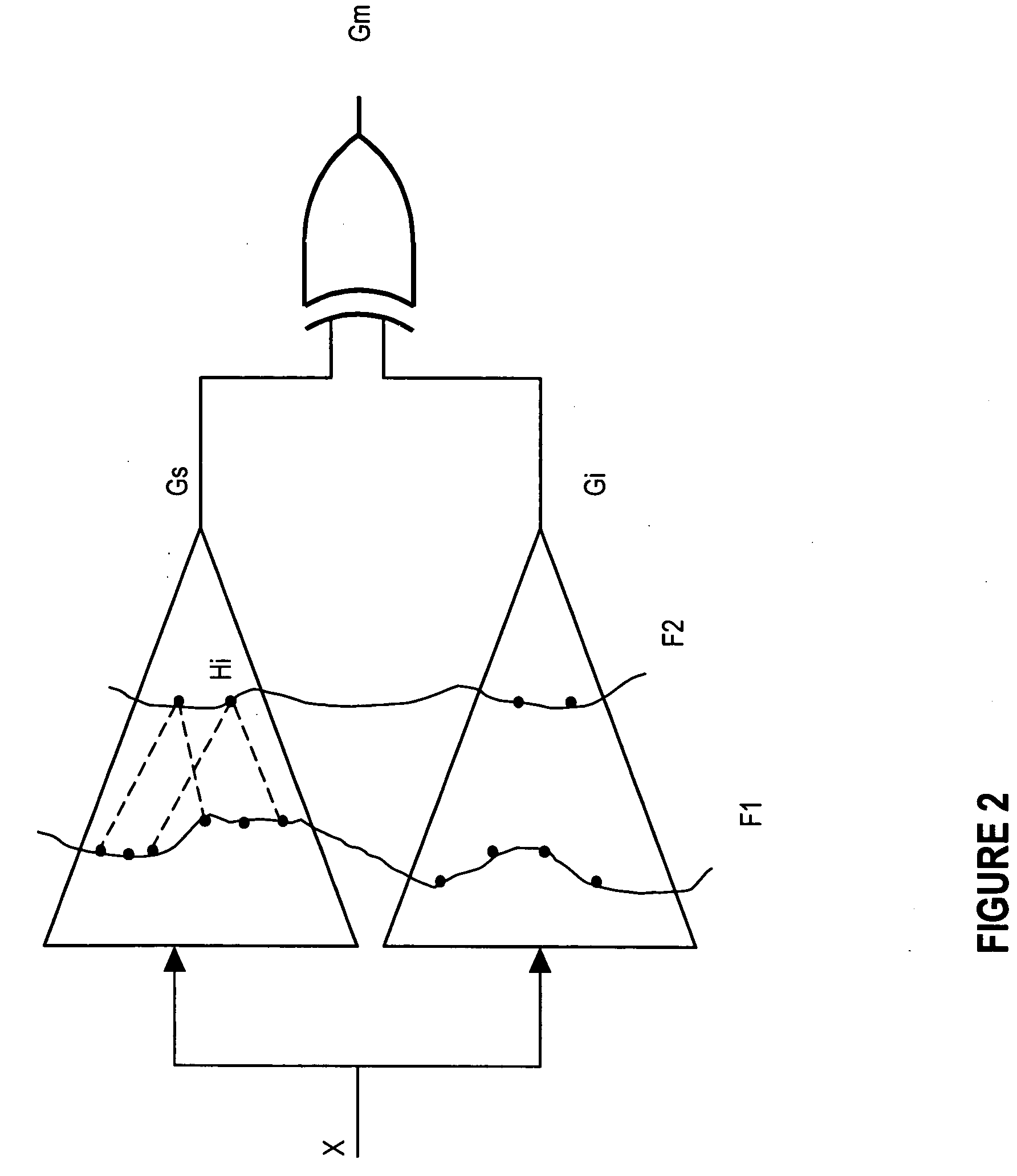Method and apparatus for cut-point frontier selection and for counter-example generation in formal equivalence verification
- Summary
- Abstract
- Description
- Claims
- Application Information
AI Technical Summary
Problems solved by technology
Method used
Image
Examples
Embodiment Construction
A method and apparatus for selecting a cut-point frontier and / or for counter-example generation are described. In the following description, particular types of circuit models, circuits, software tools and systems are described for purposes of illustration. It will be appreciated, however, that other embodiments are applicable to other types of integrated circuit models, circuits, software tools and / or systems.
For one embodiment, both a lazy cut-point frontier and an eager cut-point frontier are identified. A lazy cut-point frontier, as the term is used herein, refers to a frontier among identified cut-points that lies closest to the previous frontier (which may be the inputs of the circuit model or the portion of the circuit model being analyzed), while an eager cut-point frontier corresponds to cut-points closest to the outputs of the circuit model or portion of the curcuit model being analyzed. A cut-point frontier is a minimal set of nodes that separates a circuit of interest i...
PUM
 Login to view more
Login to view more Abstract
Description
Claims
Application Information
 Login to view more
Login to view more - R&D Engineer
- R&D Manager
- IP Professional
- Industry Leading Data Capabilities
- Powerful AI technology
- Patent DNA Extraction
Browse by: Latest US Patents, China's latest patents, Technical Efficacy Thesaurus, Application Domain, Technology Topic.
© 2024 PatSnap. All rights reserved.Legal|Privacy policy|Modern Slavery Act Transparency Statement|Sitemap



